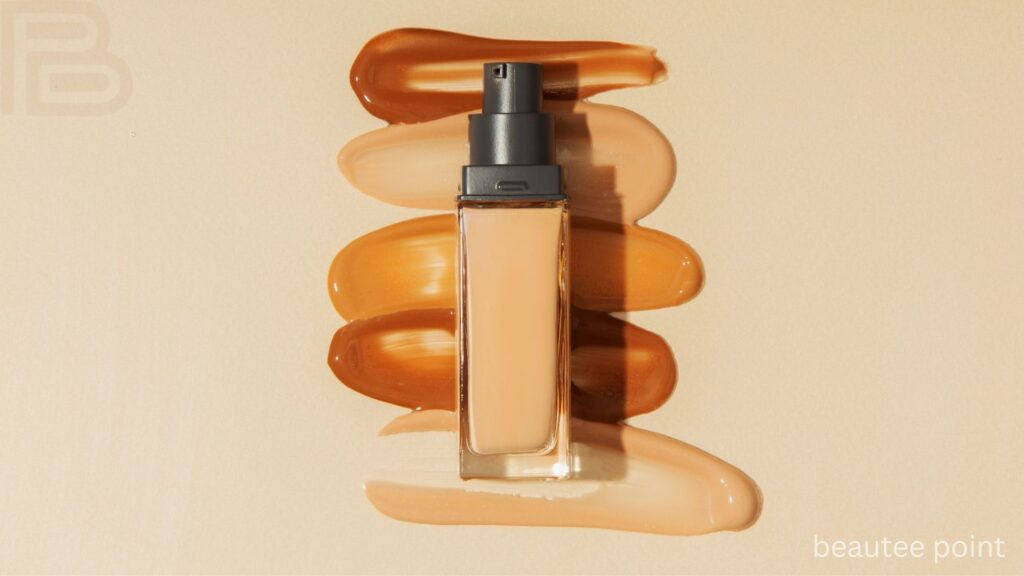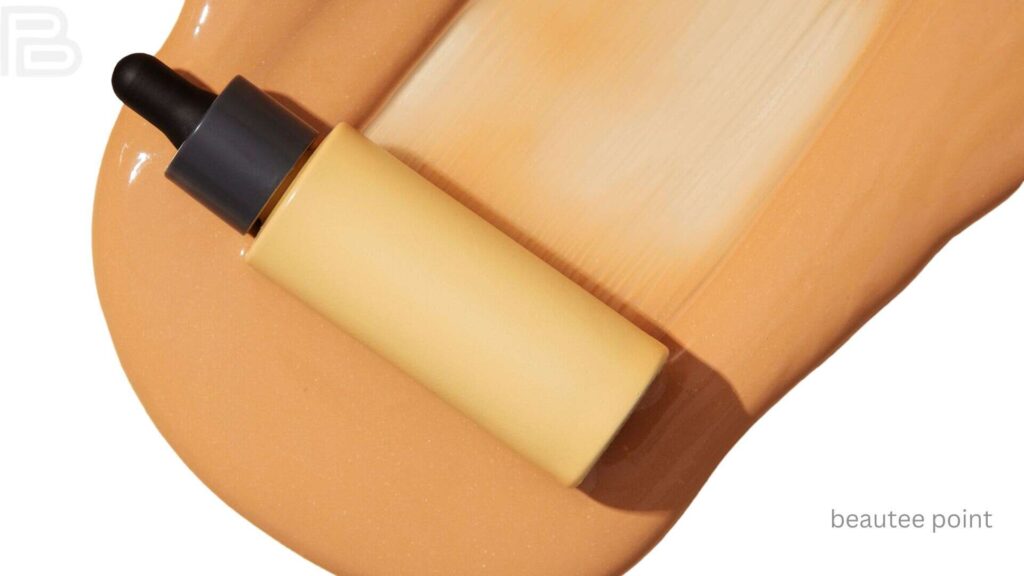Dry skin doesn’t just need moisture; it requires a technically engineered formula. Using the wrong foundation can worsen your skin by intensifying dryness, emphasizing fine lines, and dulling your complexion.
This guide offers you 10 top tips to help you choose the best hydrating foundation that not only nourishes the skin but also gives it a natural, radiant finish.

Understand What Makes the Best Foundation for Dry Skin
Dry skin is generally lacking in both moisture and natural oils, which can result in stretch marks, uneven texture, and visible blemishes.
In such a case, using the wrong foundation can create further problems, such as the foundation settling into fine lines, clogging dry areas, or making makeup look dull and cakey.
To avoid these problems, it is essential to know how well the foundation can provide moisture, adapt to the skin’s texture, and address skin sensitivity.
A formula that works beautifully on flaky skin may not work well for sensitive skin with underlying inflammation or compromised barrier function.
The key is to choose a foundation that provides lasting moisture, has a flexible texture that blends effortlessly, and is free from common irritants like fragrance or alcohol.
Always choose a foundation that nourishes the skin while also providing a beautiful finish, so that both beauty and skin health benefit at once.
Focus on Formulas with Hydrating, Skin-Loving Ingredients
When choosing a foundation for dry skin, the finish is as important as the list of ingredients.
Always select a moisturizing makeup base that not only provides coverage but also meets the skin’s moisture needs throughout the day.
Foundations containing hyaluronic acid, squalene, or glycerin act as humectants. They draw moisture into the skin and retain it for the long term, which keeps the skin fresh.
Equally important are moisturizing agents like shea butter and jojoba oil, which soften the rough texture and smooth dry patches
To enhance skin performance over time, barrier-strengthening ingredients such as ceramides, niacinamide, and panthenol are essential.
They nourish the skin and retain moisture, making your foundation wear more evenly and comfortably.
Your goal should be to choose a formula that delivers long-lasting hydration without heaviness, blends effortlessly into dry areas, and feels like skincare layered under your makeup, not a mask sitting on top of it.
Learn the Science Behind Foundation Formulas
It is essential to understand the scientific aspects of a foundation’s formula before choosing it. The performance of a foundation depends on its emulsion type and key ingredients, silicone polymers.
There are two types of foundation, depending on the emulsion: oil-in-water or water-in-oil. Hydration-boosting foundations with oil-in-water formulas are more suitable for dry skin.
They feel light but are more effective in providing moisture. Such formulas allow water to be absorbed into the skin’s upper layer, leaving it feeling soft and smooth.
Some people consider silicone polymers to be drying, but they form a breathable barrier that locks in moisture, allowing the foundation to apply easily and making it long-lasting.
For those with dry skin, this means fewer patches, less flaking, and an even finish throughout the day.
By understanding the scientific aspects of foundation and its interaction with the skin, you can choose the best formula for you that not only looks good but also provides moisture and nourishment to the skin.
Choose Texture Based on Skin Condition, Not Just Skin Type
Not all dry skin is the same, so when choosing a foundation for dry skin, the actual condition of the skin, as well as its type, is crucial.
How it feels and behaves, and how the foundation will work on it. If you have stretchy or aging skin, you will need to select the texture that best addresses these individual skin issues.
Scabby skin
Cream foundation is the best choice for flaky skin. It makes the skin soft and supple. It applies easily to dry skin and provides a smooth finish. It usually offers medium to full coverage.
Tight or dehydrated
Serum foundation is the best choice for Tight or dehydrated skin. It is a liquid foundation with skincare ingredients through hyaluronic acid and squalane.
It absorbs easily into the skin and provides moisture without a greasy feel.
Mature or thin, dry skin
For aging or thin, dry skin, a lightweight foundation with a matte or satin finish is the best choice. It highlights the skin’s natural texture without settling into fine lines. Look for a foundation that creates elasticity in the skin.
Choosing a foundation based on your skin condition not only attains the best results but also benefits skin health in the long term.
Read More: What is Foundation in Makeup? 12 Powerful Tips for a flawless Look
Don’t Underestimate Hydration’s Role in Makeup Performance
Hydration is not just about skincare; it is also essential for achieving high-quality makeup.
To get the best results from your foundation on dry skin, your skin must be well-moisturized, as the amount of moisture determines how the foundation applies and how long it lasts.
To achieve the best results, skin preparation and consistency in the foundation formula are very important.
Makeup applies easily and blends well on moisturized skin, whereas foundation can cake on dry skin and be damaged, especially in winter when the skin is even drier.
Therefore, before applying foundation, be sure to use hyaluronic acid moisturizing serums and moisturizers, and always choose a foundation that moisturizes the skin, enhances radiance, and feels comfortable.
According to experts, for long-lasting and shiny makeup, the skin needs to be completely moisturized and balanced, especially when applying foundation.
Master Application Tools and Techniques for Dry Skin
Even if you choose a great hydrating foundation, using the wrong tools or methods may not achieve the desired results.
If your goal is to achieve the best results on dry skin and avoid a cakey or uneven foundation, it’s crucial to use the right tools and method.
Always use a damp makeup sponge to apply foundation on dry or sensitive skin.
The moisture in the sponge helps the foundation absorb evenly into the skin, giving it a natural finish without adding heaviness.
This method is highly effective for buildable foundations, which can be applied gradually without highlighting dry patches.
Before using foundation, warm your fingers or the back of your hand slightly. This softens the product, making it easier to spread over dry areas of the skin.
Finally, always apply foundation in thin layers and add extra coverage where needed.
This way, the foundation blends seamlessly into the skin, providing a long-lasting finish that appears natural and smooth.
When you use the right tools and techniques, the foundation will adapt to your skin’s needs.

Test Foundation Over Time, Not Just on Application
Sometimes the best results arrive after applying foundation, but making a judgment about a foundation right away can be misleading.
The true performance of a foundation is revealed with real-life use, i.e., after some time when the skin’s natural oils, weather, and oxidation take their toll.
Sometimes a foundation looks perfect, but after a few hours of application on the skin, its color changes. It settles into wrinkles or accumulates on dry areas, becoming noticeable on blemishes.
Sometimes it starts to flake or comes off with the slightest touch, no matter what the manufacturer claims. This is when the importance of wear testing comes to the fore.
To find the best foundation, apply it to different parts of the face, especially the driest areas, for 6 to 8 hours and observe how it reacts to light, temperature, and the moisture present on the face.
Does it retain moisture? Does it enhance radiance or become dull? Does it crack, fade, or emphasize texture?
When you observe performance over time, you will be able to choose a foundation that looks beautiful not only when applied but all day long.

Know the Most Common Mistakes (and How to Fix Them)
Choosing the wrong primer
Mattifying primers reduce moisture, which can make dry patches more noticeable and cause the foundation to peel off.

Are you looking for a foundation that absorbs into the skin and lasts longer? Always use primers with hyaluronic acid or glycerin.
Applying makeup without moisturizer
Applying foundation without moisturizer to dry skin can cause difficulties such as flaking and creasing, making the skin appear dull.

Always moisturize your nose, cheeks, and forehead well before applying makeup.
Applying foundation immediately after skin preparation
Applying foundation immediately after skincare products can cause the foundation to separate.

Always wait for the skin to fully dry after using skincare products.
Applying a heavy and full coverage foundation immediately
Using either sheer or full coverage foundation on dry skin always gives a cakey look.

Always start with blendable or buildable foundations and gradually build up coverage.
Repeated application on dry patches
Using more foundation on dry skin makes that area more noticeable.

Blend foundation after first applying a hydrating concealer or oil-based primer to dry areas.
Testing the foundation only on the face
Applying it to the hands or neck does not deliver an accurate result

Always apply foundation to the dry areas of the face to achieve a true finish.
Avoid These Dry Skin Foundation Pitfalls
Choosing the wrong foundation formula
Choosing the wrong foundation formula, as matte and alcohol-based foundations dry out the skin further.
Solution
Always use foundations with hyaluronic acid, squalane, or deramides.
Use of opposing formulations
Applying a water-based foundation and an oil-based moisturizer together can cause the makeup to separate.
Solution
Use compatible skincare products and makeup in terms of formulation.
Applying more layers
Applying foundation layer after layer on dry skin creates a cakey look.
Solution
Always apply foundation in thin layers and add additional coverage as needed.
Applying additional foundation during touch-ups
Excessive use of foundation on dry areas increases flaking and dryness.
Solution
After applying moisturizer or setting spray to dry areas, gently blend the foundation to ensure even coverage.
Using direct powder
Setting powder absorbs moisture from already dry skin, which can cause foundation to settle into fine lines.
Solution
Use a light touch of finely milled powder where needed. A hydrating setting spray is Ideal for preserving a dewy finish.
On-Blended skincare layers
Foundation appears in separate layers when the moisturizer or serum is not fully absorbed into the skin.
Solution
Take a short break after applying a skincare product to ensure it’s fully absorbed into the skin.
Overlapping SPF moisturizer under foundation
Sometimes the moisturizer ingredients in SPF and foundation don’t match, causing separation.
Solution
If your foundation contains SPF, pair it with a mineral sunscreen, as it tends to be more compatible and less likely to interfere with the formula.
Read More: Best Foundation For Aging Skin Over 50
Remember, coverage alone isn’t everything.
The purpose of makeup on dry skin is not just to hide imperfections, but also to nourish the skin and enhance its natural glow.
Most women prefer full-coverage foundations that give a mask-like finish. However, this method can make dry skin appear dull.
On the contrary, always choose buildable and breathable foundations so that you can create the coverage you need without weighing down the skin.
A foundation that combines makeup and skincare products is called a good nourishing foundation. It absorbs into the skin while gradually enhancing skin texture and radiance.
For skin that is prone to dryness, roughness, or wrinkles, a foundation with skincare benefits provides a natural smoothness.
In short, a full-coverage foundation only hides skin imperfections, while a skincare foundation absorbs into the skin and gives a natural finish.
Summary
Foundation is not just makeup for dry and sensitive skin; it’s a strategy to protect the skin and achieve long-lasting results.
Hydrating foundations not only give a smooth finish to the face but also maintain skin health. The right foundation can prevent problems like rough spots, fine lines, and flaking.
Remember, the best foundation for your skin is the one that feels light and comfortable while providing moisture.
What’s the best liquid foundation for dry and sensitive skin?
Foundations with hydrating ingredients like Hyaluronic acid, squalene, or ceramides are best for dry and sensitive skin. They moisturize the skin while protecting it from irritation. Formulas with alcohol or matte finishes can further dry out the skin.
How do I stop my foundation from looking cakey on dry skin?
Lack of moisture makes the foundation cakey. Moisturize the skin first. Apply foundation in light layers. Always blend with a damp makeup sponge. Don’t use too much powder. Use a hydrating setting spray to maintain a natural glow.
Should I use a primer before foundation on dry skin?
Yes, use a hydrating primer, i.e., one containing glycerin or peptides, before foundation. These make the foundation last longer, provide moisture to the skin, and eliminate dryness


2 thoughts on “10 Pro-Level Tips to Choose the Best Foundation for Dry Skin”